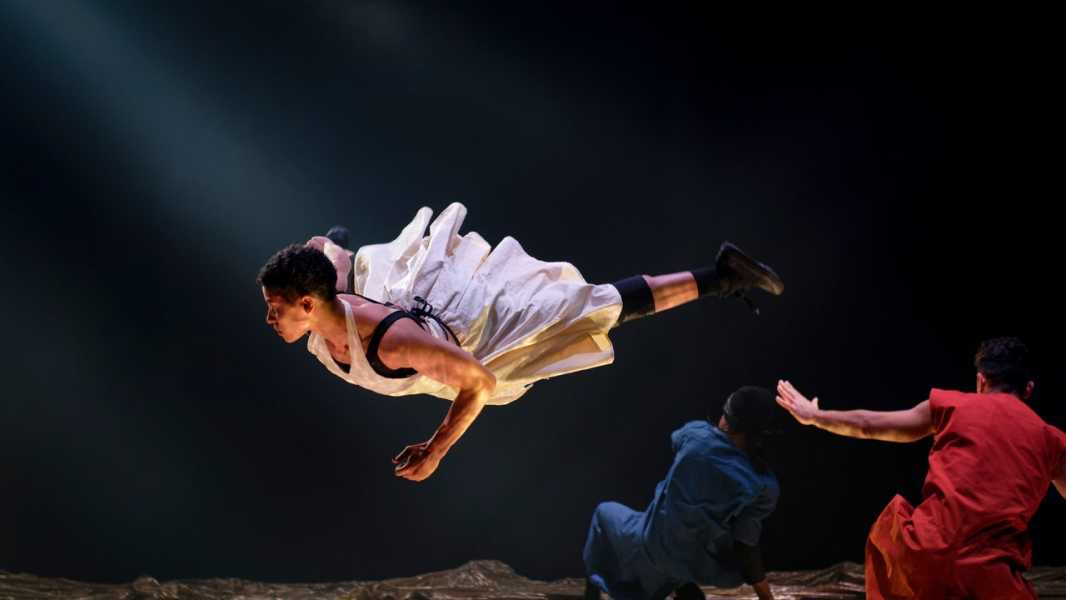
Save this storySave this storySave this storySave this story
Alex Barasch
Culture editor
You’re reading the Goings On newsletter, a guide to what we’re watching, listening to, and doing this week. Sign up to receive it in your in-box.
This winter has seen the revival of the movie musical, although not everyone who bought tickets at their local multiplex knew what they were getting into. “Mean Girls”—a hybrid of the classic 2004 comedy and the 2018 Broadway show—which opened this past weekend, had hidden its true nature so effectively that when Cady first burst into song, members of my audience burst into incredulous, discomfited laughter. Conditions did not improve from there. Tina Fey’s updated script is, among other things, considerably less mean, softening insults and revamping the queer outcasts Janis and Damian, who now function as the film’s Greek chorus and moral center. But any changes to the story are largely ineffective: the “Mean Girls” of 2024 hews closely enough to its source material that it mostly serves to make you miss the original. Nell Benjamin’s clunky lyrics (Cady, we are informed ad nauseam, is “smart with math but stupid with love”) don’t help. Fey tries to filter old plot points through the modern social-media landscape, but she doesn’t actually have much to say about the mechanics of Instagram or TikTok—where the whole project is now being mocked by the teens it was trying to win over.

“Mean Girls.”
Photograph by Jojo Whilden / Courtesy Paramount
“Wonka,” released in December, is another I.P.-reliant, bright-hued musical attempting to court Gen Z with twentysomething-star casting. Unlike Renée Rapp, who is, for all the faults of “Mean Girls,” a genuine powerhouse in the role of Regina George, Timothée Chalamet is noticeably ill-equipped for the role of young Willy Wonka—though I also don’t envy him the task of rhyming “chocolate” with “pocke-let.” His forced whimsy and insistent wholesomeness mark a falling off from Gene Wilder’s more unsettling, far more memorable take on the character in “Willy Wonka & the Chocolate Factory,” the 1971 adaptation of Roald Dahl’s book. Several friends responded to the new offerings the same way: by going straight home after the movie to stream its predecessor.
Spotlight
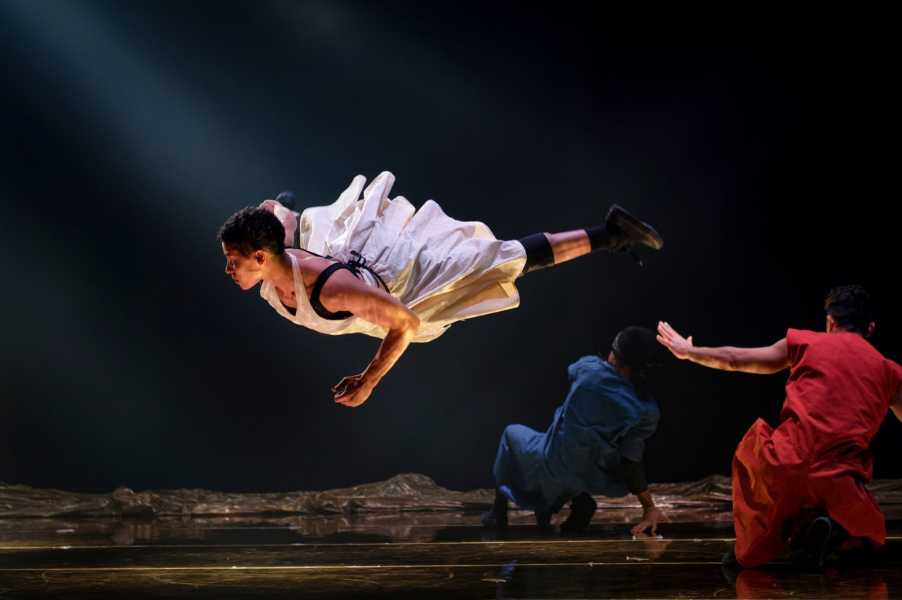
Photograph by Nathalie SternalskiDance
The dancers of Compagnie Hervé Koubi, which is based in Calais, could be mistaken for gods. They glide, spin, toss one another in high arcs through the air, exhibiting an uncanny mastery of the body, and a gravitas that renders their movements into poetry. Unlike Koubi’s previous works, his latest, “Sol Invictus,” includes women. At times, these grave, heroic figures hold their fingers to their brows in a shape that suggests a crown of sun rays; perhaps the idea is that we each contain a god within. The piece is animated by the unfashionable and romantic notion that a common humanity unites us all.—Marina Harss (Joyce Theatre; Jan. 23-28.)

About Town
Rock
For nearly four years, across four albums, the Asheville, N.C., rock band Wednesday has distilled shoegaze and alt-country into a little vortex. The writing of the singer and guitarist Karly Hartzman is full of haunted memory fragments of the American South, too damaged to be narratives but so evocative that they seem scenic, with many images of things coming to ruin. “We had to add it to the tab / To die we’d have to settle up,” she sings on “Quarry,” from the band’s most recent album, the striking “Rat Saw God.” Hartzman operates in tandem with three other guitarists—MJ Lenderman (lead), Xandy Chelmis (lap steel), and Ethan Baechtold (bass)—and the drummer Alan Miller to summon both noise and quiet, seeking escape from an endless malaise.—Sheldon Pearce (Brooklyn Steel; Jan. 25.)
Art
The brilliant Belgian-born artist Stéphane Mandelbaum, who died in 1986, at the age of twenty-five, created some of the more complicated and awe-inspiring drawings of the twentieth century, in part because his bold, graphic work reflects so much of the horror of the times, with fervor, curiosity, and raw power. The grandson of Holocaust survivors, Mandelbaum always drew, and in his pictures of family members, Jews, and Nazi war criminals, one can see the influence of Ralph Gleason and Art Spiegelman, artists who, like Mandelbaum, tackled big questions about identity and survival but provided no answers: to each, history is open-ended, and life continues. Mandelbaum’s strong hand and imagination is evident everywhere in these fifty-seven works, artfully arranged by the Drawing Center’s director, Laura Hoptman. Part of the show’s force derives from Mandelbaum’s love of women; his depictions of various lovers are so visceral, you can taste his joy and amazement in every line.—Hilton Als (The Drawing Center; through Feb. 18.)
Dance
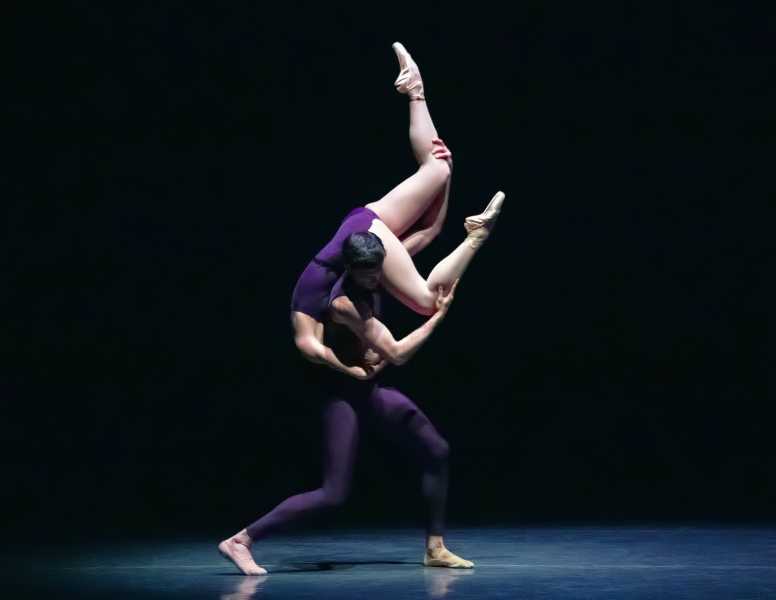
Christopher Wheeldon’s “Polyphonia.”
Photograph by Erin Baiano
New York City Ballet continues its march through its seventy-five-year history with a season that combines the old and the new. Two freshly minted works will be unveiled, one by a leading dancer in the company, Tiler Peck (Feb. 1), her first on her home turf, and the other by City Ballet’s incoming artist-in-residence, Alexei Ratmansky (Feb. 15). Additional ballets in the season include one of the most striking premières of this century, Christopher Wheeldon’s spare, mystery-filled “Polyphonia” (2001), and two Balanchine masterworks—the abstract “Four Temperaments” and the intimate and grand “Liebeslieder Walzer.”—Marina Harss (David H. Koch Theatre; Jan. 23-March 3.)
Off Off Broadway
Over the past several years, the smooth, palpably clever performer Eric Berryman has devoted himself to a project of cultural retrieval. With the Wooster Group, using field recordings preserved on rare LPs, he reënacts songs and folk oratory from the African American past. Back in 2019, he put out “The B Side: Negro Folklore from Texas State Prisons.” Now, directed by Kate Valk, comes “Get Your Ass in the Water and Swim Like Me,” Berryman’s performance of “toasts”—rhyming, rhythmic ballads, with assistance from the drummer Jharis Yokley, heralding the outsized deeds, often sexual, of trickster and badman heroes. Berryman acts as a kind of cool, genial radio DJ, but he’s also the crooner who delivers the preacherly, proto-hip-hop goods. It’s a variety show, a history lesson, and an almost spiritual reëmbodiment all at once.—Vinson Cunningham (The Performing Garage; through Feb. 3.)
Art
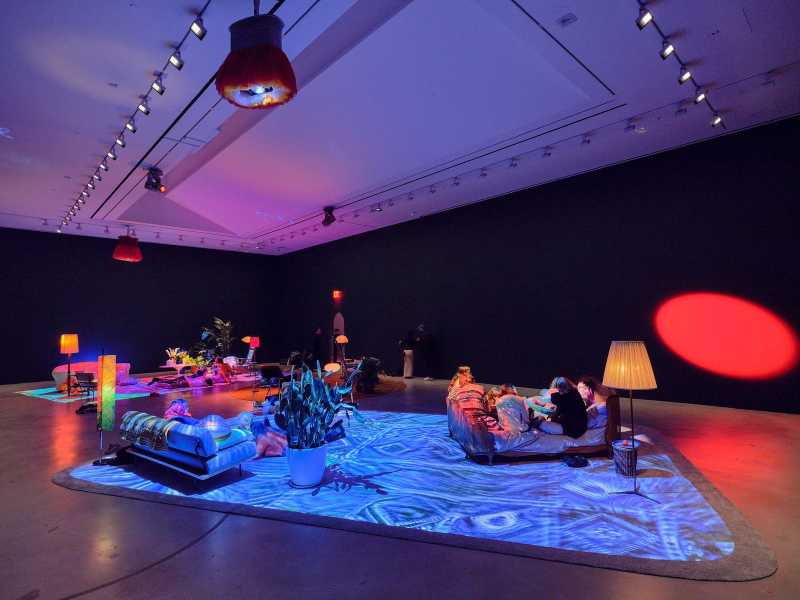
Art work © Pipilotti Rist / ARS / Courtesy the artist / Hauser & Wirth / Luhring Augustine; Photograph by Thomas Barratt
An antique marble fireplace, a model of a human intestine, a 1.5-ton boulder, park benches, rainbow fibreglass blobs, carpets coated in oozy tie-dye video projections: the contents of the Swiss artist Pipilotti Rist’s two-gallery exhibition, “Prickling Goosebumps & a Humming Horizon,” are as flashy and exhausting as a casino, though she’s been considerate enough to include couches and pillows, too. Gallerygoers who come to take a load off may be surprised to find the eccentric objects curiously forgettable; what sticks with you instead is the mood of grim, compulsory whimsy. Hollywood movies, it’s been said, are becoming more and more like theme-park rides. Perhaps avant-garde art is, too?—Jackson Arn (Luhring Augustine through Feb. 24; Hauser & Wirth through April 13.)
Movies
Mani Haghighi’s new film, “Subtraction” (playing in the Iranian Film Festival New York), reinforces the notion that the highest form of surrealism is realism with a twist. It’s centered on a young woman in Tehran, a driving instructor, who thinks that she sees her husband entering another woman’s apartment. But he has an ironclad alibi, and when he investigates, he discovers that he and his wife are doubles of the other woman and her husband. Haghighi unfolds in meticulous detail the identical couples’ differing circumstances (one couple has a child, more money, and legal trouble); the tense plot involves their risky and deceitful efforts to use their resemblances to solve their problems. By way of deft and seamless C.G.I., the doubles appear together, to jolting and outrageous effect; Haghighi’s suave, taut images shudder with cosmic humor and seethe with danger.—Richard Brody (Screening Jan. 26 at IFC Center.)
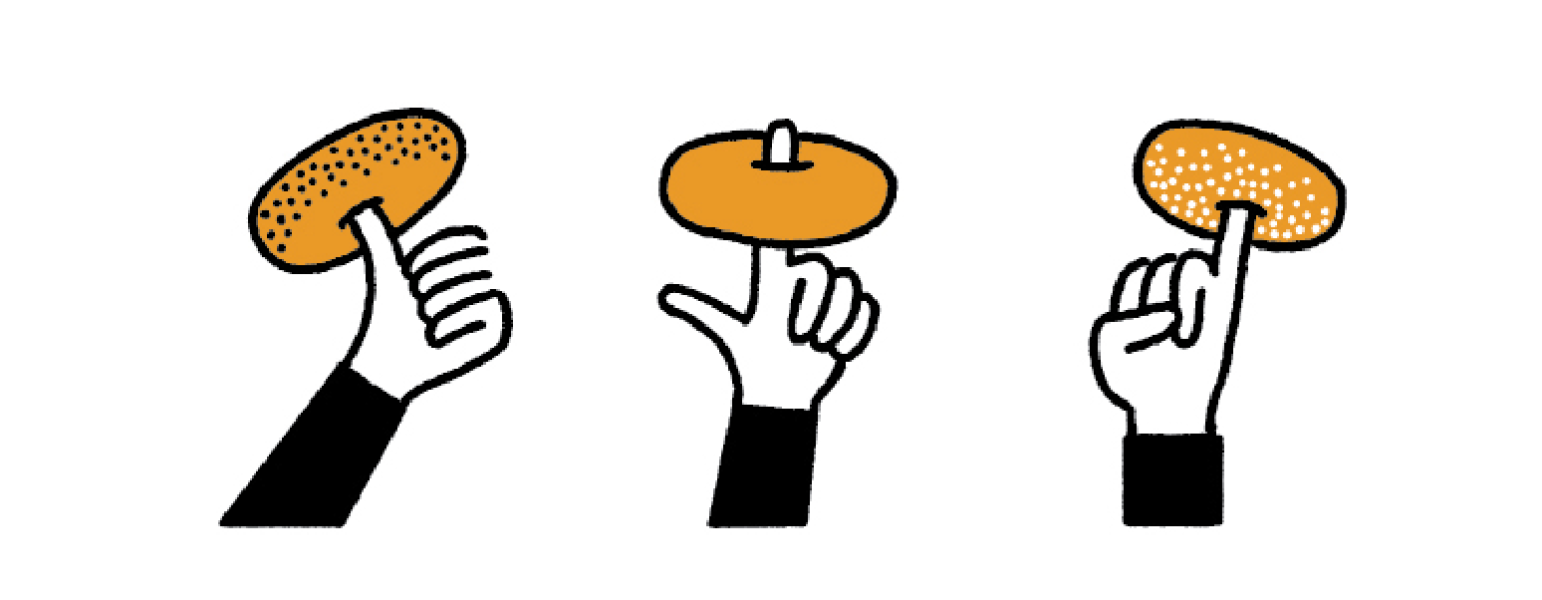
Pick Three
The staff writer Michael Schulman shares his current obsessions.
1. One historic night in 1985, more than forty music superstars convened in a Hollywood recording studio to sing the anthem “We Are the World,” to raise money for famine relief in Africa. Bao Nguyen’s documentary “The Greatest Night in Pop” (arriving on Netflix on Jan. 29) retraces the evening’s logistical nightmares and sonic magic, using extensive archival footage and new interviews with such luminaries as Bruce Springsteen, Cyndi Lauper, and Lionel Richie, who wrote the song with Michael Jackson.
2. The life of a drama critic isn’t typically one of thrills and chills, but the Times journalist Alexis Soloski imagines otherwise in her noirish début novel, “Here in the Dark.” Drawing on a real incident from Soloski’s time at the Village Voice—a young man asked to interview her, then apparently went missing after their meeting—the book follows an icy, vodka-swilling theatre critic who gets entangled in a mystery. (The Broadway star Laura Benanti reads the audiobook.) Think “The Flight Attendant,” with Sophocles jokes.
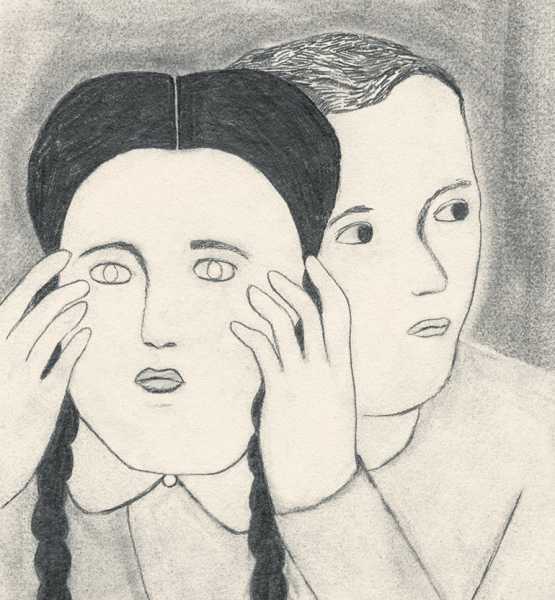
Illustration by Martha Verschaffel
3. After releasing the demented Thanksgiving special “Our Home Out West,” a parody of small-town melodrama, the impish comedic dynamo Cole Escola takes on the role they were born to play: Mary Todd Lincoln. In “Oh, Mary!” (starting Jan. 26, at the Lucille Lortel), Escola embodies the former First Lady—complete with gowns and histrionics—in the days leading up to the assassination of her husband (Conrad Ricamora), telling the tale “through the lens of an idiot.”
P.S. Good stuff on the Internet:
- Steve Carrell honors Ryan Gosling
- Annie Liontas on life after concussion
- A sketch about hearing your own voice
Sourse: newyorker.com